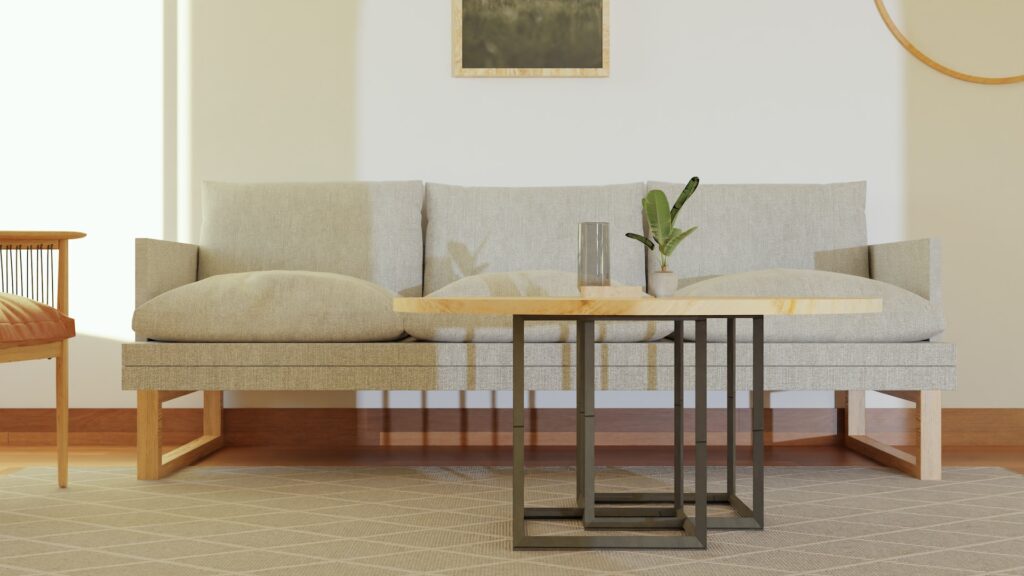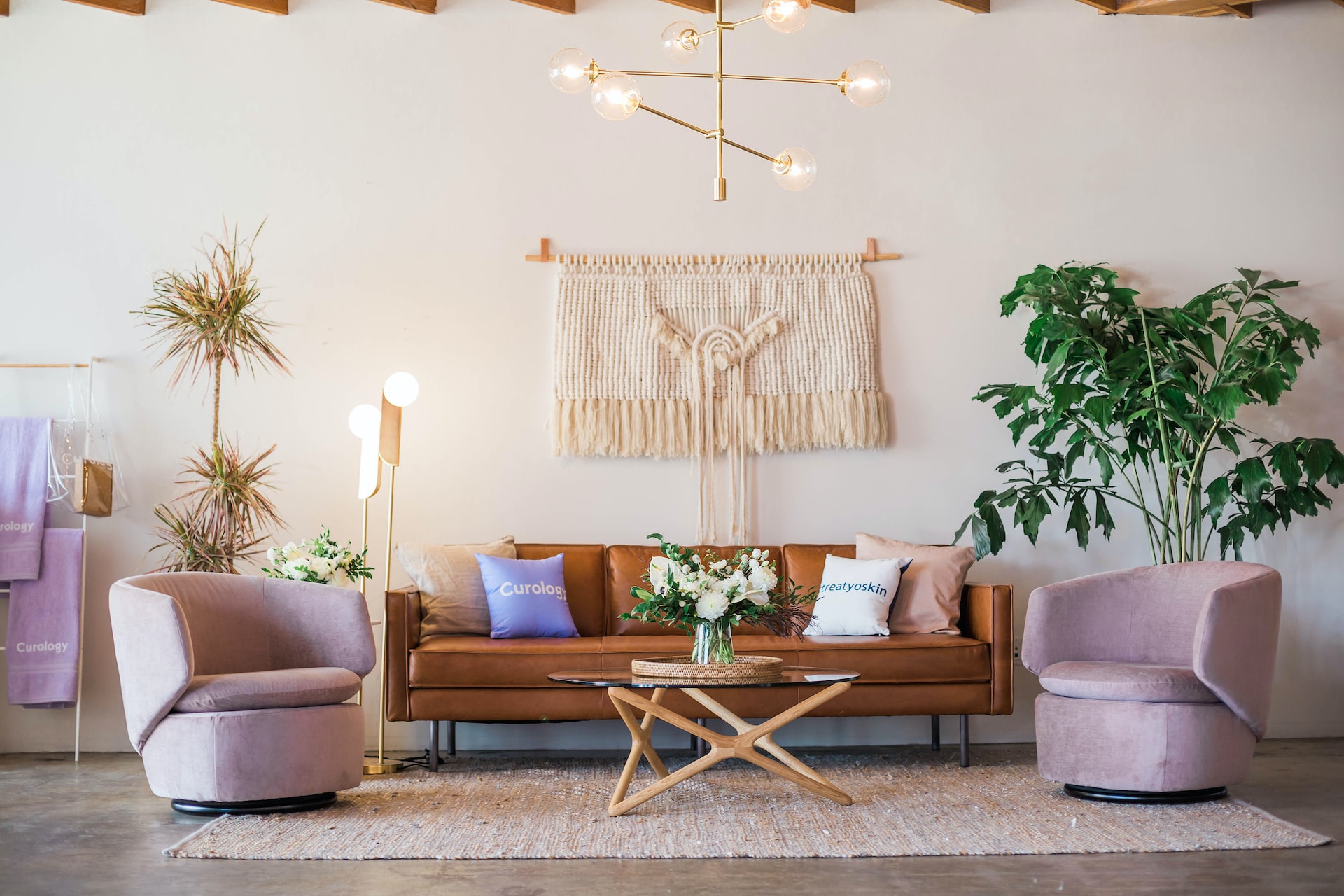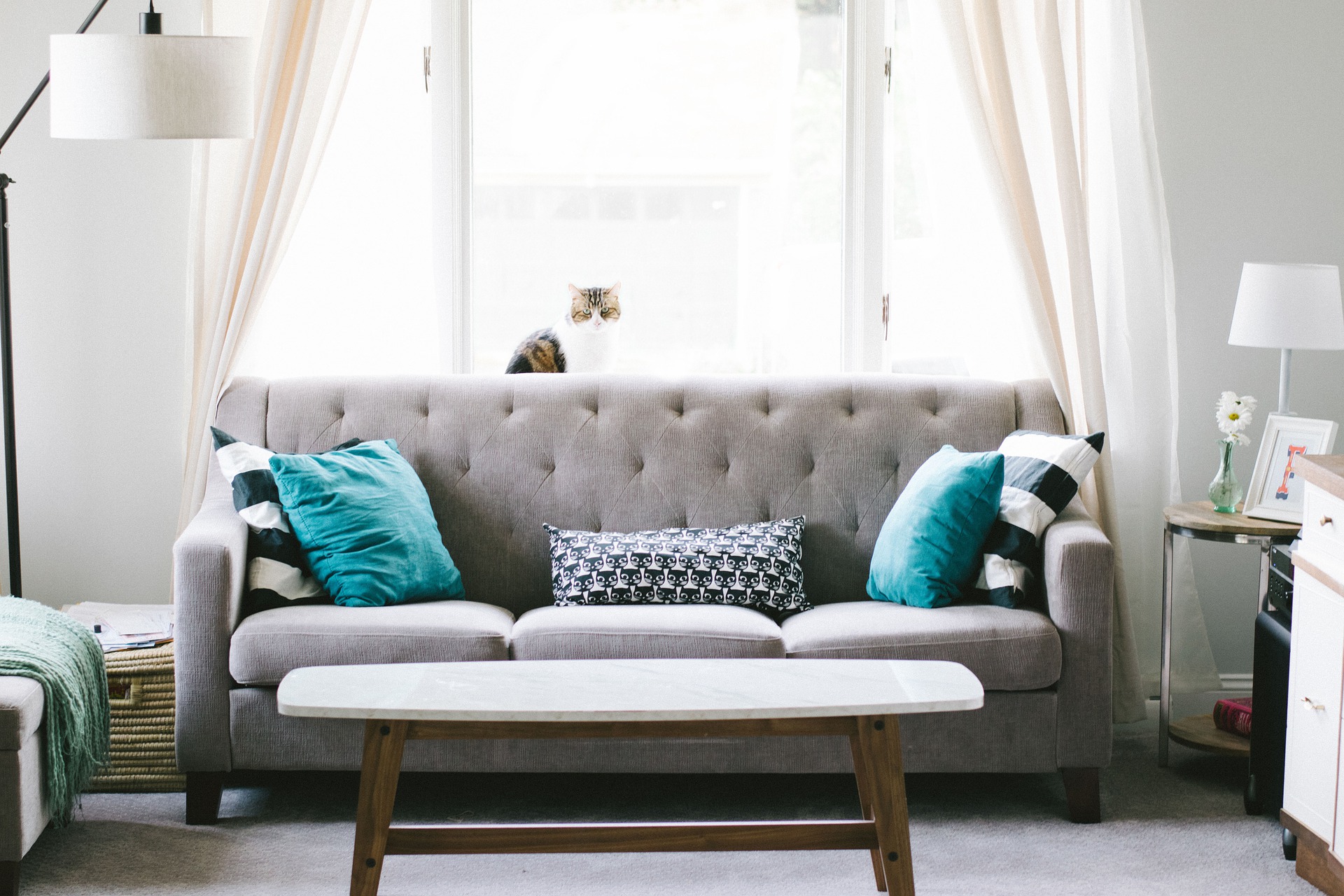Have you ever walked into a living room and felt that something was slightly off but couldn’t quite put your finger on it? More often than not, the little details make all the difference in interior design, and one such detail is the height of the coffee table. But do you have any idea of how tall are most coffee tables? This seemingly minor aspect of your living space can significantly impact the room’s overall aesthetic, functionality, and comfort.
In this article, I will discuss the importance of selecting the right coffee table height and provide practical advice to help you find the perfect fit for your home. By understanding the factors influencing the ideal height for your coffee table, you’ll be better equipped to create a comfortable and visually appealing living space that reflects your unique style and preferences. So, let’s dive in and explore the world of coffee table heights together.
Standard Height: How Tall Are Most Coffee Tables

Before exploring the factors influencing the ideal coffee table height, we must understand the industry standard range.
Generally, coffee tables have a height of 16 to 18 inches (40 to 46 cm). This range is suitable for most living spaces, as it provides a comfortable height for placing drinks, decorative items, or even the occasional snack. The average coffee table width usually lies between 18 to 24 inches (46 to 61 cm), offering ample surface area without overwhelming the room.
For example, imagine browsing through a furniture store and coming across a sleek, modern coffee table that stands 17 inches tall and measures 22 inches wide. This table falls within the industry standard range and would likely be a versatile option for various living room setups.
Relation to Sofa and Seating Height
Now that we know the standard height for coffee tables, it’s crucial to consider how this relates to the height of your sofa and other seating options in the room. The golden rule here is that the coffee table should ideally be at the same height as the seat cushions on your sofa or slightly lower. It ensures a well-balanced appearance and allows for comfortable use by all who gather around it.
Let’s take a real-life scenario to illustrate this point. Suppose you have a sofa with seat cushions that are 18 inches high. In this case, you’d want to look for a coffee table that is either 18 inches tall or slightly shorter, around 16 to 17 inches. This alignment makes it easy for you and your guests to reach for a drink, remote control, or magazine without straining or feeling uncomfortable.
With these guidelines in mind, you can select a coffee table that complements your seating and contributes to a harmonious and inviting living space.
Average Space You Need Around the Coffee Table

Before we discuss the average space required around a coffee table, it’s crucial to understand why it’s essential. Adequate space around your coffee table ensures:
- Comfortable movement: Sufficient space allows you and your guests to move freely without bumping into the table or other furniture.
- Easy access: Ample space ensures that everyone seated can easily reach out for their drinks, snacks, or remote controls
- Balanced aesthetics: A well-proportioned layout creates a harmonious and visually appealing living room.
Factors Affecting the Space Requirements Around a Coffee Table
Several factors come into play when determining the amount of space needed around a coffee table:
- Average coffee table size: Larger coffee tables require more space around them than smaller ones.
- The shape of the coffee table: Round or oval tables can be more space-efficient than rectangular or square ones, as they allow for smoother movement.
- Seating arrangement: The type and arrangement of your seating furniture, such as sofas and chairs, influence the space needed around the coffee table.
- Room size and layout: The dimensions and shape of your living room play a significant role in determining the available space around the coffee table.
Here are some general guidelines to help you determine the average space required around your coffee table:
- Space between the coffee table and seating: Aim for a distance of about 14-18 inches (35-45 cm) between the coffee table and the surrounding seating furniture. It allows for comfortable legroom and easy access to the table.
- Space for walking around: Ensure at least 24-30 inches (61-76 cm) of walking space around the coffee table. It helps avoid collisions and provides enough room for people to move around freely.
- Room for additional furniture: If you have other furniture pieces, such as side tables or ottomans, allocate sufficient space without crowding the coffee table.
Know The Right Placement of Coffee Table
Knowing the right placement of a coffee table can be challenging, especially when maximizing both aesthetic appeal and functionality. Here are the key factors to consider when positioning your coffee table, ensuring it becomes a statement piece in your living space.
📌Determine the Ideal Distance from the Sofa
One of the most crucial aspects of placing a coffee table is determining the perfect distance between the table and the sofa or seating area. A general rule of thumb is to maintain a distance of around 18 inches (45 centimeters) between the edge of the table and the edge of the seating. It allows for comfortable legroom while still keeping items on the table within easy reach.
However, the ideal distance may vary depending on the size of your living space, the layout of your furniture, and personal preferences. Be sure to experiment with different distances to find the one that works best for your room.
📌Consider the Height of Your Coffee Table
The height of your coffee table is another vital factor in the right placement of the piece. Ideally, your coffee table should be the same height as the seat cushions of your sofa or slightly lower. It ensures a cohesive look and makes reaching items on the table easy for you and your guests.
However, if you prefer a more modern and eclectic look, you can opt for a taller coffee table that stands out as a focal point in your living space. Remember that a taller table may be less convenient for reaching items and could obstruct the view of your television or other focal points in the room.
📌Balance the Coffee Table with Other Furniture
To create a harmonious and visually appealing living space, it’s essential to balance the coffee table dimensions and size with the other furniture in the room. Consider a larger coffee table to maintain proportion and balance if you have a large sofa. On the other hand, if your seating area is more compact, a smaller table may be more appropriate.
Additionally, consider the shape of your coffee table concerning the other furniture pieces. For example, if your sofa has rounded edges, a round or oval coffee table may complement the design better than a rectangular or square one.
📌Allow for Adequate Walking Space
When positioning your coffee table, ensuring enough walking space around it is critical. Aim for at least 24-30 inches (60-76 centimeters) of clearance between the coffee table and other furniture or walls. It allows for comfortable movement and prevents the space from cramping or cluttering.
📌Experiment with Different Layouts
Don’t be afraid to experiment with different layouts when placing your coffee table. Try positioning it diagonally, off-center, or floating it in the middle of your seating area. Experimenting with various placements can help you discover the perfect arrangement that maximizes aesthetic appeal and functionality in your living space.
Factors to Consider When Choosing a Coffee Table Height

A coffee table is more than just a place to rest your coffee or display your favorite books. It’s an essential piece of furniture that ties together the design and functionality of your living room. One important aspect to consider when choosing the ideal coffee table is its height.
💕Sofa Height: Finding the Perfect Balance
The height of your sofa plays a significant role in determining the appropriate height for your coffee table. Ideally, the coffee table should be the same height as the sofa cushions or slightly lower. It allows easy access to items on the table without reaching up or down uncomfortably.
For example, if your sofa has a seat height of 18 inches, you should aim for a coffee table with a height between 16-18 inches. However, personal preferences and individual comfort levels may vary, so it is essential to test different heights before deciding. You can use stacks of books or boxes to simulate various coffee table heights and determine what feels most comfortable for you and your family.
Remember that the goal is to create a cohesive and balanced look in your living room, so don’t neglect the visual aspect. If your sofa has a low-profile design, a tall coffee table might look out of place, whereas a shorter table could complement the overall aesthetic.
💕Functionality: Catering to Your Lifestyle
Beyond sofa height, another crucial factor to consider when choosing a coffee table height is its functionality. Think about how you use your living room and what purposes the coffee table will serve.
Some common functions of a coffee table include:
- Storage: If you need storage space for books, magazines, or small items like remote controls, consider a coffee table with built-in storage compartments or shelves. The height of these compartments should be easily accessible from a seated position.
- Display: If you plan to showcase decorative items, such as art pieces or flower arrangements, opt for a coffee table with a slightly higher height than your sofa. It will draw attention to the displayed items and create an attractive focal point in your living room.
- Workspace: A taller coffee table can function as a makeshift desk if you often work or study in your living room. In this case, choose a height that allows you to comfortably use your laptop or write while sitting on the sofa.
- Dining: For those who enjoy eating in front of the TV, a coffee table that is slightly higher than your sofa can make it easier to reach your food without hunching over.
💕Room Size: Maximizing Space and Comfort
Considering your room’s size is crucial when determining the ideal coffee table height. A too-tall or short coffee table can make a small room feel cramped, while it may appear out of place or insignificant in a larger room.
Opt for a coffee table with a lower profile in smaller living rooms to create the illusion of more space. For example, if your living room measures 10×12 feet, a coffee table height of 14-16 inches could be a suitable choice. It will help maintain a sense of openness and prevent overcrowding in the room. Additionally, consider choosing a coffee table with a glass top or a slim design to enhance the spaciousness.
Conversely, in a larger living room, a taller coffee table might be more appropriate to fill the space and create a balanced look. If your living room measures 18×20 feet, a coffee table height of 18-20 inches could work well. In this case, you can also opt for a more substantial design or a table with multiple levels to add visual interest and anchor the room.
💕Proportions: Harmonizing with Surrounding Furniture
Achieving the right proportions between your coffee table and surrounding furniture is essential for creating a visually pleasing and functional living space. While the height of your sofa is significant, don’t forget to consider other elements, such as side tables, armchairs, and accent pieces.
For instance, if you have side tables that are 24 inches tall, a coffee table with a height of 16-18 inches would create a harmonious flow and allow for easy access to items on both surfaces. Similarly, if your living room features a mix of seating options like armchairs, loveseats, and ottomans, ensure that the coffee table height complements the varying seat heights. It will help maintain balance and avoid awkward interactions when reaching for items on the table.
Pay attention to the distance between your coffee table and other furniture. Generally, leaving at least 18 inches of space between the edge of the coffee table and the nearest seating is advisable. It allows for comfortable legroom and easy movement around the room.
💕Style Preferences: Reflecting Your Unique Taste
Your personal style preferences should play a role in determining the right coffee table height. The height you choose can significantly impact the overall aesthetic of your living room, so selecting a table that matches your unique taste and complements the existing décor is essential.
For example, if you prefer a minimalist, modern look, a low-profile coffee table with clean lines and simple materials might be ideal. In this case, a height of 14-16 inches could help emphasize the sleek design and create a streamlined appearance.
On the other hand, if you gravitate towards a traditional or classic style, a taller coffee table with ornate details and rich materials might be more suitable. Here, 18-20 inches in height could add elegance and sophistication to your living space.
Frequently Asked Questions
Q: How tall should a coffee table be concerning the sofa?
A: Finding a suitable coffee table to complement your sofa can be your greatest triumph or an unending search. One of the factors that make it tricky is determining the ideal height. I always find it beneficial to consider your height and the sofa’s seat height to ensure comfort and ease of use.
Generally, the table height should range from 16 to 18 inches, measuring from the floor to the tabletop. This height allows easy access to your coffee cup while maintaining a comfortable distance from the sofa.
Q: Can a coffee table be higher than the sofa?
A: When it comes to coffee tables and sofas, there are no one-size-fits-all rules. It all depends on your style and what feels comfortable to you. While there isn’t necessarily a right or wrong way to do it, I’m all for going against the norm and trying something new. Maybe a taller coffee table would give your room the cozy yet sophisticated feel you’re going for. And, who knows, it could even serve as a conversation starter at your next gathering. It’s your home, and your décor choices should reflect your personality and preferences.
Q: What coffee table can I get for my small living room?
A: As you search for the best coffee table for your small living room, remember that you want to make every inch count while also expressing your style. Perhaps a round wooden table with tapered legs would fit your minimalist aesthetic, or maybe you prefer a vintage metal piece with a crosshatch pattern.
Don’t be afraid to get creative with your decision. You could even repurpose a stack of vintage suitcases or a trunk for a unique, eclectic touch. Just make sure the table is proportional to the space, allows for an easy flow of movement in the room, and has a functional purpose.
Q: How do I choose the right shape for my coffee table?
A: Choosing the right shape for your coffee table can be daunting. But don’t worry. It’s all about finding the shape that best complements your style and the layout of your living room. If you have a tight space, a circular coffee table can help maximize the space and create a cozy and intimate feel.
On the other hand, a rectangular coffee table or square coffee table can add a touch of sophistication and structure to your room. If you have children or pets, a round table with no sharp edges could be the best option for safety reasons. Ultimately, the right shape for your coffee table all comes down to your personal preferences and the overall design aesthetic of your home.
Final Thoughts
Selecting the right coffee table height is crucial to creating a comfortable and visually appealing living space that reflects your unique style and caters to your lifestyle. A well-chosen coffee table can serve as a functional centerpiece in your living room, providing storage, display, workspace, or dining options. It can also create a harmonious flow and balance between your sofa, side tables, armchairs, and other accent pieces.
To find the perfect coffee table for your living space, consider factors such as sofa height, functionality, room size, proportions, and style preferences. Don’t be afraid to experiment with different heights using makeshift props like books or boxes to determine what feels most comfortable and looks best in your space.
Remember, investing time and thought into selecting the ideal coffee table height will enhance the overall aesthetic of your living room and create a welcoming and functional environment for you and your loved ones to enjoy for years to come. Now that you’re equipped with valuable tips and insights, it’s time to start searching for the perfect coffee table that complements your unique taste and transforms your living space into a true reflection of who you are.


